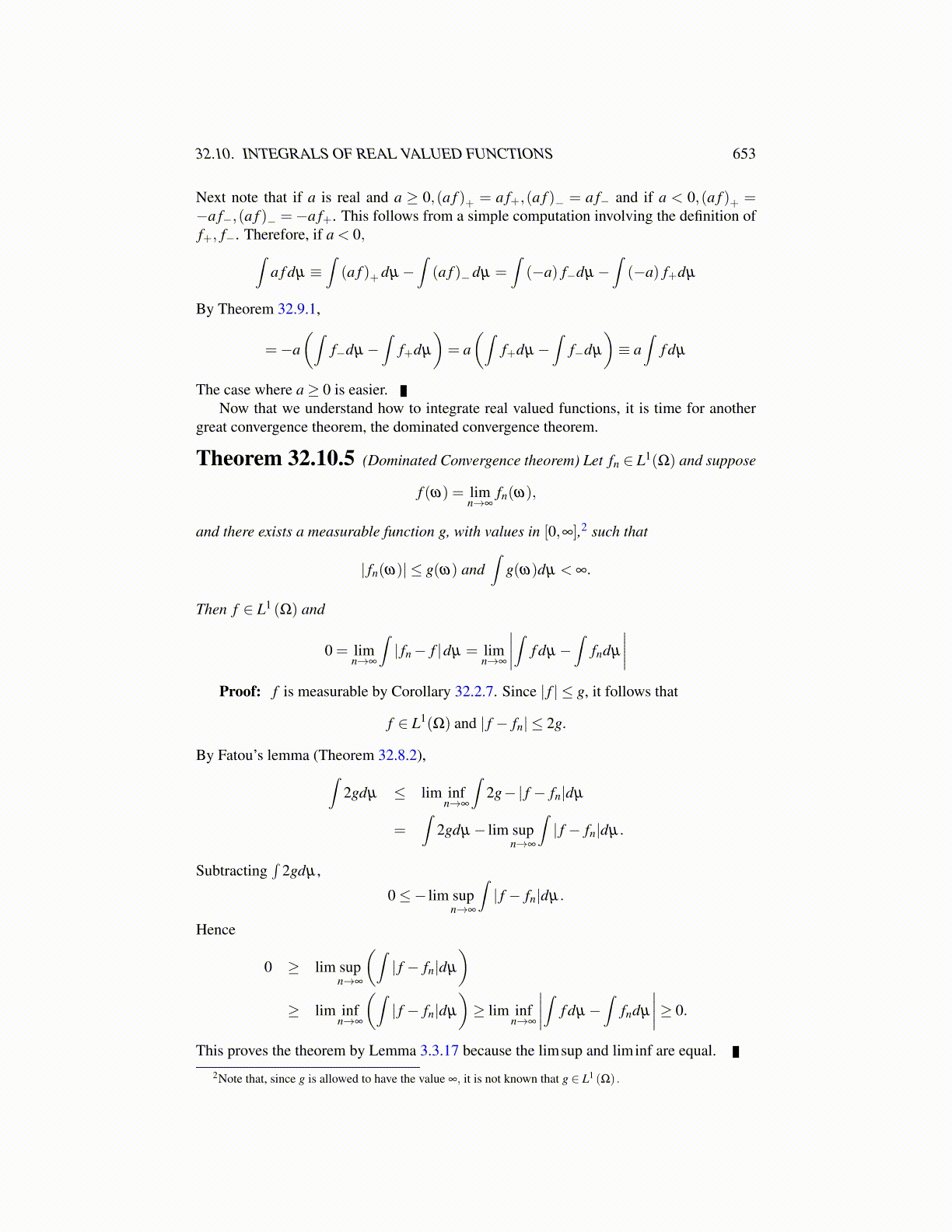
32.12. PRODUCT MEASURES 653
as∫I XF (x1, · · · ,xp)dµI . Let G denote those subsets F of X such that all iterated inte-
grals for XF∩Rn (x1, · · · ,xp) make sense and are independent of the permutation. Thus, forshort,
G ≡{F ⊆X : for all n,
∫IXF∩Rn (x1, · · · ,xp)dµI is independent of I
}The iterated integral means exactly what the symbols indicate. First you integrate
XF (x1, · · · ,xp)
with respect to dµ i1 and then you have a function of the other variables other than xi1 . Youthen integrate what is left with respect to xi2 and so forth. This is just like what was withiterated integrals in calculus. In order for this to make sense, every function encounteredmust be measurable with respect to the appropriate σ algebra. Now obviously K ⊆ G . Infact, if F ∈ K , then
∫I XF∩Rn (x1, · · · ,xp)dµI = ∏
pi=1 µ i (Fi ∩Rn
i ) for any choice of n.
Proposition 32.12.2 Let K and G be as just defined, then G ⊇ σ (K ) . We defineσ (K ) as F p, better denoted as F1 ×·· ·×Fp. Then if
µ⃗ (F )≡ limn→∞
∫IXF∩Rn (x1, · · · ,xp)dµI ,
then µ⃗ is a measure which does not depend on I the particular permutation chosen forthe order of integration. µ⃗ often denoted as µ1 × ·· · × µ p is called product measure.f : X → [0,∞) is measurable with respect to F p then for any permutation (i1, · · · , ip) of{1, · · · , p} it follows ∫
f dµ⃗ =∫
· · ·∫
f (x1, · · · ,xp)dµ i1 · · ·dµ ip(32.14)
Proof: I will show that G is closed with respect to complements and countable disjointunions. Then the result will follow. Now suppose
{F k}∞
k=1 are disjoint, each in G . Thenif F ≡ ∪∞
k=1Fk,F ∩Rn = ∪∞
k=1Fk ∩Rn and since these sets are disjoint,
XF∩Rn =∞
∑k=1
XF k∩Rn
Therefore, applying the monotone convergence theorem repeatedly for the iterated inte-grals and using the fact that measurability is not lost on taking limits, then for (i1, · · · , ip),( j1, · · · , jp) two permutations,∫
· · ·∫
XF∩Rn (x1, · · · ,xp)dµ i1 · · ·dµ ip
=∫
· · ·∫
limN→∞
N
∑k=1
XF k∩Rn (x1, · · · ,xp)dµ i1 · · ·dµ ip
= limN→∞
∫· · ·∫ N
∑k=1
XF k∩Rn (x1, · · · ,xp)dµ i1 · · ·dµ ip
= limN→∞
N
∑k=1
∫· · ·∫
XF k∩Rn (x1, · · · ,xp)dµ i1 · · ·dµ ip